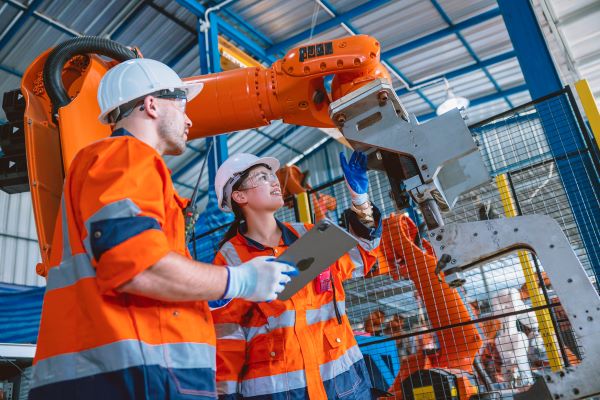Big ‘M’ manufacturing has a big ‘P’ problem
If you only have time to read the first few lines of this post, here’s the short version.
After years of investment in faster, better design engineering, and then in PLM systems used to organize product data, the industry has not found a way to make that data truly useful.
It has not yet made that data easily consumable, customized and at scale, by the mass audience of individuals in the ecosystem who need to understand specifically how to support, build, use, and maintain the products the data depicts, at any given moment.
This is the third phase of digital transformation, and it’s crucial to unlocking the value of the investments that drove (and continue to drive) the 3D CAD and PLM phases.
It is critical to manufacturing success – and it’s what Canvas Envision does.
Let’s dig into that.
Constant acceleration
The PLM world is essentially focused on one challenge: How to get very complex engineering data into a format everyone can use to efficiently do their jobs. It’s a problem the industry is always chasing, because rapid advances in 3D CAD and surrounding technology continue to accelerate the rate at which new design data is created.
Generative design will compound the problem. Giving AI the ability to drive CAD will produce hundreds of designs in hours instead of months. That means a deluge of design changes which must be aggregated, organized, and then communicated out to every individual whose role is affected – in a way that is contextualized to their need.
PLM does the plumbing; it keeps tracks of versions, sends data to the right places, and is great at orchestrating workflows. And it lets you visualize 3D CAD. But PLM won’t let you take the 10 or 15 other sources of data it houses and rapidly aggregate them, along with the CAD data, into intuitive and easy to consume pieces of content which meet the unique contextual requirements of all the stakeholders in manufacturing.
Aggregation and contextualization are key
This is something that needs to happen at scale. Just as there are many variants of data coming into the PLM, there are many required variants in the output of that data. Field engineers need a different view of the data from assembly engineers, who need a different view of the data from the supplier who has to provide a quote on new versions of parts every time a design changes.
The data is all there but, until now, there hasn’t been a good way to package this highly intelligent information effectively.
To do so requires easy content creation and intuitive content consumption. The reality is that most “tech pubs” authoring systems are too complex for the average human to put together a meaningful piece of content which describes how to assemble or fix a product. And if you have 50 different work cells which each need tailored content, the upfront time cost is immense.
Clarity, not information overload
This is why documentation is often late, often lacks clarity, and often results in workers making mistakes that cause delays, errors, rework, and costly re-orders. In addition, documentation today is typically flat ‘paper on glass’ (although real paper remains very much in effect) providing no easy way for workers to seek the additional clarity they often require.
Forcing the entire native CAD file on to shop floor and service environments goes to the opposite extreme; overloading individual workers with unmanageable datasets and causing severe operational inefficiencies. Although, it’s a good way to sell more CAD licenses...
We need a different solution. One that extends the value in the digital thread from design engineering data, through the PLM, out to every individual who needs to action that data, but which gives them only the specific intelligence they need at a given moment. This solution needs to do two things:
- Make it easy for anyone, with no specialist training, to rapidly author content that combines all of those PLM-held data sources – always current thanks to PLM integration – into visual, interactive digital documents which transform complexity into clarity.
- Provide workers with the ability to use carefully filtered, interactive CAD data to inspect and clarify specific model information when required – giving them the ability to solve their own problems as they arise.
None of this is arguing that the industry has gone wrong. These challenges exist for all the right reasons, because the industry has staged its investments in the correct order.
The third phase is here
Advances in CAD have solved a real world design problem. And PLM does a great job at organizing the vast quantities of product data modern manufacturers are required to manage.
We are now at the point where making that data available in an intuitive and highly contextualized, customizable way for a huge audience of people with differing requirements is a fundamental requirement of operational success.
The third phase of digital transformation is here, and I’m excited to be working with the Canvas team to make it happen.

Peter Schroer is an angel investor specializing in digital transformation in manufacturing, the founder of Aras PLM, and Chairman of the Canvas GFX board.


